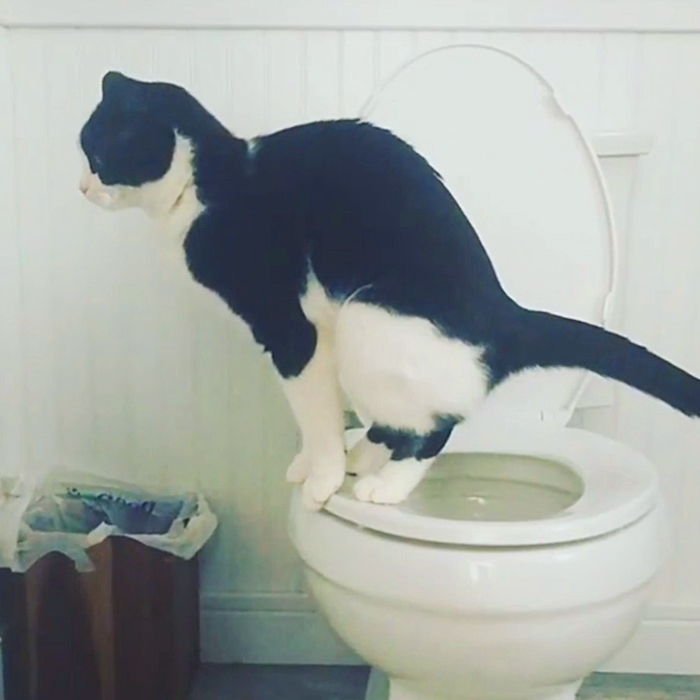Don't Flush Cat Poop Down Your Toilet - Preserve Your House's Pipe System
Don't Flush Cat Poop Down Your Toilet - Preserve Your House's Pipe System
Blog Article
Just about everyone may have their private way of thinking on the subject of Don’t flush cat feces down the toilet.

Introduction
As feline owners, it's important to bear in mind exactly how we take care of our feline friends' waste. While it may appear hassle-free to purge feline poop down the toilet, this practice can have detrimental effects for both the setting and human health and wellness.
Alternatives to Flushing
Thankfully, there are safer and extra accountable ways to dispose of feline poop. Consider the adhering to options:
1. Scoop and Dispose in Trash
One of the most common technique of throwing away cat poop is to scoop it right into a biodegradable bag and toss it in the garbage. Make sure to make use of a devoted trash inside story and deal with the waste without delay.
2. Use Biodegradable Litter
Choose eco-friendly feline clutter made from materials such as corn or wheat. These clutters are eco-friendly and can be securely taken care of in the trash.
3. Bury in the Yard
If you have a backyard, consider hiding cat waste in a marked area far from veggie yards and water resources. Be sure to dig deep adequate to prevent contamination of groundwater.
4. Install a Pet Waste Disposal System
Invest in an animal garbage disposal system particularly made for feline waste. These systems make use of enzymes to break down the waste, minimizing odor and ecological impact.
Health Risks
Along with ecological worries, purging cat waste can likewise position health and wellness risks to human beings. Pet cat feces might consist of Toxoplasma gondii, a parasite that can create toxoplasmosis-- a potentially extreme health problem, particularly for expectant women and people with damaged immune systems.
Ecological Impact
Flushing feline poop presents dangerous pathogens and parasites right into the water supply, presenting a substantial risk to water ecological communities. These contaminants can negatively affect aquatic life and concession water top quality.
Conclusion
Accountable pet dog possession extends beyond offering food and sanctuary-- it additionally entails correct waste management. By refraining from flushing cat poop down the toilet and selecting alternate disposal approaches, we can decrease our ecological impact and secure human health and wellness.
Why Can’t I Flush Cat Poop?
It Spreads a Parasite
Cats are frequently infected with a parasite called toxoplasma gondii. The parasite causes an infection called toxoplasmosis. It is usually harmless to cats. The parasite only uses cat poop as a host for its eggs. Otherwise, the cat’s immune system usually keeps the infection at low enough levels to maintain its own health. But it does not stop the develop of eggs. These eggs are tiny and surprisingly tough. They may survive for a year before they begin to grow. But that’s the problem.
Our wastewater system is not designed to deal with toxoplasmosis eggs. Instead, most eggs will flush from your toilet into sewers and wastewater management plants. After the sewage is treated for many other harmful things in it, it is typically released into local rivers, lakes, or oceans. Here, the toxoplasmosis eggs can find new hosts, including starfish, crabs, otters, and many other wildlife. For many, this is a significant risk to their health. Toxoplasmosis can also end up infecting water sources that are important for agriculture, which means our deer, pigs, and sheep can get infected too.
Is There Risk to Humans?
There can be a risk to human life from flushing cat poop down the toilet. If you do so, the parasites from your cat’s poop can end up in shellfish, game animals, or livestock. If this meat is then served raw or undercooked, the people who eat it can get sick.
In fact, according to the CDC, 40 million people in the United States are infected with toxoplasma gondii. They get it from exposure to infected seafood, or from some kind of cat poop contamination, like drinking from a stream that is contaminated or touching anything that has come into contact with cat poop. That includes just cleaning a cat litter box.
Most people who get infected with these parasites will not develop any symptoms. However, for pregnant women or for those with compromised immune systems, the parasite can cause severe health problems.
How to Handle Cat Poop
The best way to handle cat poop is actually to clean the box more often. The eggs that the parasite sheds will not become active until one to five days after the cat poops. That means that if you clean daily, you’re much less likely to come into direct contact with infectious eggs.
That said, always dispose of cat poop in the garbage and not down the toilet. Wash your hands before and after you clean the litter box, and bring the bag of poop right outside to your garbage bins.
https://trenchlesssolutionsusa.com/why-cant-i-flush-cat-poop/

I found that article on How to Dispose of Cat Poop and Litter Without Plastic Bags while browsing the search engines. Are you aware of somebody else who is occupied with Can You Flush Cat Poo or Litter Down the Toilet?? Why not promote it. We take joy in reading our article about Don’t flush cat feces down the toilet.
Check Us Out Report this page